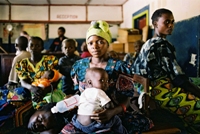
Noncommunicable diseases now biggest killers
The global burden of disease is shifting from infectious diseases to noncommunicable diseases, with chronic conditions such as heart disease and stroke now being the chief causes of death globally, according to a new WHO report published today. The shifting health trends indicate that leading infectious diseases - diarrhoea, HIV, tuberculosis, neonatal infections and malaria - will become less important causes of death globally over the next 20 years.
The statistical report documents in detail the levels of mortality in children and adults, patterns of morbidity and burden of disease, prevalence of risk factors such as smoking and alcohol consumption, use of health care, availability of health care workers, and health care financing. It also draws attention to important issues in global health, including:

|
||||||||
|
|
||||||||
